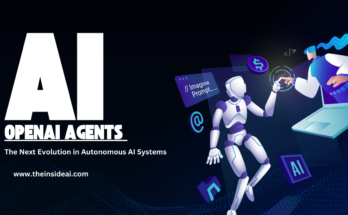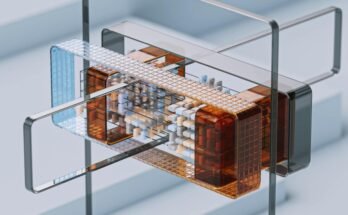The field of computer vision is evolving rapidly, and one of the most groundbreaking innovations in this space is Meta’s SAM 2 (Segment Anything Model). This model represents a leap forward in image segmentation, which is one of the core tasks in computer vision. SAM 2 enables the identification, segmentation, and classification of objects within an image, regardless of their size, shape, or location, with unprecedented ease and accuracy.
In this article, we’ll delve into what the Segment Anything Model (SAM 2) is, how it works, and the transformative impact it has on various applications. By understanding SAM 2’s architecture, use cases, and its impact on industries such as healthcare, autonomous driving, and augmented reality, you’ll grasp how this model is changing the landscape of computer vision.
What is the Segment Anything Model?
SAM 2 is an advanced AI model developed by Meta, designed to perform object segmentation. Object segmentation is the process of identifying and isolating individual objects within an image or video. Unlike traditional segmentation models that require extensive training for each object class, It is built to segment any object in any image with minimal human intervention.

SAM 2 leverages Meta’s robust AI and deep learning framework to accurately recognize objects in images across various categories. This capability extends to common objects (e.g., people, animals, vehicles) and more abstract, rare objects that traditional models might miss.
How Does SAM 2 Work?
SAM 2 is built on transformer-based architectures, which have proven to be highly effective in tasks such as natural language processing (NLP) and computer vision. Transformers use self-attention mechanisms to focus on different parts of the input data, which is critical for identifying the intricate details needed for precise segmentation.

Here’s a simplified breakdown of how SAM 2 works:
1. Input Preprocessing: The image or video is first processed by SAM 2’s feature extraction module. It uses convolutional neural networks (CNNs) to extract essential features like edges, textures, and shapes.
2. Transformer Layers: It employs multi-layer transformers that use self-attention to analyze different aspects of the input. This allows the model to weigh important regions and details within the image, making it adept at context-aware segmentation.
3. Mask Generation: The model generates segmentation masks, which are binary images that highlight the area of the object. Each mask corresponds to a different object in the scene, allowing SAM 2 to efficiently separate objects from the background.
4. Object Classification: After segmentation, SAM 2 can classify objects if needed. Although SAM 2’s primary task is segmentation, it’s built to integrate with other models to perform classification, recognition, and even action prediction.
Key Features of SAM 2

Zero-Shot Segmentation: SAM 2 can segment objects in images without prior training on specific classes. This is a significant departure from previous models, which required large labeled datasets for training.
Multi-Object Segmentation: It’s capable of identifying and segmenting multiple objects simultaneously, regardless of their size or position within the image.
Interactive Segmentation: SAM 2 allows for interactive segmentation, meaning that users can refine and guide the model’s outputs based on specific needs. This feature makes it incredibly useful for tasks that require precision, such as medical image analysis.
High Versatility: SAM 2 can handle images from a wide range of domains, making it applicable to industries like healthcare, entertainment, automotive, and more.
Applications of SAM 2

The versatility and power of SAM 2 make it suitable for a wide array of use cases. Here are some key industries where it is making a significant impact:
1. Healthcare
In medical imaging, SAM 2 can assist in the segmentation of organs, tissues, and abnormalities in medical scans (e.g., MRIs, X-rays). This enables doctors to diagnose conditions faster and with more accuracy, revolutionizing fields such as oncology and radiology.
2. Autonomous Vehicles
Self-driving cars rely on accurate segmentation models to understand their surroundings. SAM 2 can segment pedestrians, vehicles, and obstacles in real-time, leading to safer and more reliable autonomous driving systems.
3. Augmented Reality (AR) and Virtual Reality (VR)
In AR and VR, precise segmentation is critical for rendering virtual objects that blend seamlessly with the real world. SAM 2 enables the development of immersive AR/VR applications by accurately segmenting the environment and interacting with virtual objects.
4. Content Creation and Video Editing
Its ability to segment objects in videos opens new possibilities in the media and entertainment industry. Video editors can use the model to isolate objects or people in videos for effects, transformations, or augmented content creation.
5. E-commerce and Retail
In retail, It can be used to automatically segment products from images, improving online shopping experiences by allowing users to interact with products in new and exciting ways.
The Impact of SAM 2 on Computer Vision
It marks a transformative step forward in computer vision technology. Its ability to generalize across multiple object types without needing task-specific training makes it a valuable tool for industries that rely heavily on computer vision. The zero-shot learning capability of SAM 2 is particularly groundbreaking because it removes the necessity for massive labeled datasets, which are often costly and time-consuming to create.

The accuracy, speed, and scalability of SAM 2 also highlight its potential for real-time applications, such as live video processing in autonomous systems, security surveillance, and even gaming.
Advantages Over Traditional Models

Reduced Need for Annotated Data: Traditional segmentation models rely heavily on annotated datasets for training, but it can segment objects it hasn’t seen before. This reduces the time and cost associated with dataset labeling.
Better Generalization: It’s ability to work across different domains and object categories without retraining is a huge step forward. Traditional models often struggle with generalization outside their trained categories, but SAM 2 excels in this regard.
Interactive Capabilities: Users can interactively refine segmentations, which is particularly useful for industries requiring high precision.
As Meta and other tech giants continue to push the boundaries of computer vision, It is likely just the beginning. Future iterations of the model could incorporate more advanced features, such as the ability to predict object behavior, interact with dynamic environments, and even support 3D object segmentation for more immersive AR/VR experiences.
The implications of SAM 2 are profound, particularly as industries continue to embrace automation and AI-driven decision-making. Whether it’s transforming healthcare, powering autonomous vehicles, or revolutionizing entertainment, the Segment Anything Model is set to be a cornerstone in the future of artificial intelligence and computer vision.
Conclusion

SAM 2 is a game-changing technology in the realm of computer vision, offering unmatched versatility and precision in object segmentation. It’s zero-shot learning, multi-object segmentation, and ability to generalize across various domains make it a revolutionary tool for industries that rely on accurate image and video processing. As we look to the future, it’s potential will likely expand even further, shaping how we interact with and understand the world around us.



